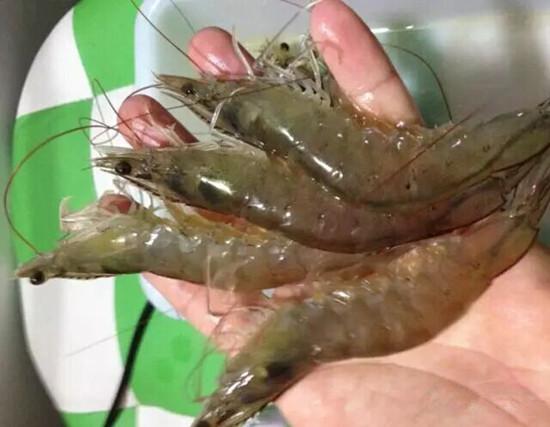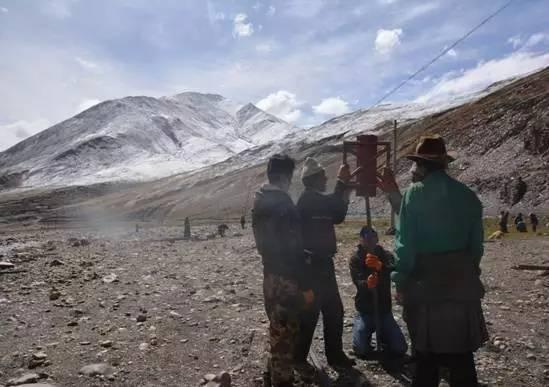One article tells you: how does Rudong shed shrimp regulate the algal phase?

The main beneficial algae in shed culture are diatoms and green algae, but it is difficult to cultivate pure beneficial algae species in culture. In general, harmful flagellate algae such as dinoflagellate, Cryptophyta, Euglenophyta and so on co-exist in the water body of small shed culture. Therefore, it is a very difficult problem for algae phase regulation. The direct problem of water quality caused by high water temperature, high density and small culture space is that there are many organic suspended solids in culture water. These organic suspended substances are indispensable nutrients for flagellate algae.
The growth of algae is regulated according to their own nutritional changes, so we should first understand the nutrients needed by all kinds of algae, and then adjust them appropriately, we can control the direction of algae phase growth in the water quality of the shed.
We often hear a saying in the required nutritional culture: "raise shrimp first raise water, raise water first raise bottom". "raise water and raise the bottom first" means: if you want to make the water quality good, you must raise the bottom well. So what is this bottom?
The bottom mainly refers to the sediment pollution source, the bottom quality is good, the water body suspended matter is few, the water quality is beautiful and cool, this is the so-called good water. In fact, there is another meaning, that is, the bottom nutrition bank. The pond bottom is rich in nutrients, algae grows well and the water quality is beautiful and cool. Part of the nutrients needed for the growth of algae in the shed are obtained from water and artificial fertilization to obtain nutrients such as nitrogen and phosphorus. The other part is the organic matter produced from the feed residue at the bottom of the pond and the replacement of algae, which is decomposed with the participation of microflora for algae to absorb its nutrients. The bottom nourishment in "raising water before raising the bottom" refers to less pollution of sediment and rich nutrient pool at the bottom of the pond. Therefore, the bottom nutrient bank is related to the direction of the algal phase of the water body.
Nutrients needed for the growth of various algae:
(1) the growth nutrition of green algae, the ratio of nitrogen to phosphorus, phosphorus is more than nitrogen.
The fresh water used for breeding in the shed is added from the river where domestic water is used, which is mixed with domestic sewage, and the content of domestic water is high. In this way, the shed goes straight into the river and it is easy to cultivate a body of green algae. This solves a difficult problem: "the shed covers the river directly. Why is the water getting fatter and greener?" It is because of the ratio of nitrogen to phosphorus in the river, partial phosphorus, so it is just suitable for the growth and nutrition of green algae, the more set of water, the greener!
(2) the growth nutrition of diatoms, the ratio of nitrogen to phosphorus, nitrogen is more than phosphorus.
In the underground well water of the small shed breeding land, the ammonia nitrogen content of part of the well water is on the high side, and the feeding water into the small shed is mainly to inject the underground well water continuously. Farmers who have raised the shed will observe a common phenomenon that the water in the early stage of seedling release is yellowish and tea-brown, and the water is dominated by diatoms under a microscope.
At this time, some farmers may not understand why some shed water will turn into green water in the middle of cultivation, and a large number of well water will become greener and greener instead. In fact, another factor is that in the middle of culture, due to the nutritional supplement brought by a large amount of bait, the nutrition at the bottom of the pond tilts the ratio of nitrogen to phosphorus, the total nutrition of the water body changes to partial phosphorus, and green algae begin to appear slowly. Because the life cycle of diatoms is short and the growth density is not as high as that of green algae, diatoms can not compete with green algae, and a large number of green algae grow in water. At this time, even the constant amount of nitrogen fertilizer in the well water will not help, because green algae has become the dominant population, adding nitrogen fertilizer has been unable to change the current growth trend of green algae. Farmers should understand that green algae prefer phosphate fertilizer, but it is not that it does not absorb nitrogen fertilizer!
Therefore, after we understand the growth form of diatoms, do not make this mistake: "the water body dominated by green algae can change the growth trend of green algae as long as nitrogen fertilizer is added." In terms of competitiveness, even when the fertilizer effect is sufficient, green algae can grow rapidly as long as there is a little fertilizer effect suitable for the growth of green algae. Because of its short growth cycle and weak pressure on other algae, diatoms will eventually evolve into green algae water. So we will often see a phenomenon is: the shed is green, but also constantly sprinkle amino acids to change the fertilizer ratio, the result is that the more fat the water, the greener.
Aiming at how diatoms suppress green algae in the shed water, Xiaobian has a method: in the water body dominated by green algae, the water body is too fat and too green and wants to be transformed into diatom water. First of all, water entrapment, disinfection or Bacillus suppress a large part of the vigorous green algae, according to the feeling of green algae aging or downward trend, and there are a small amount of diatoms. At this time, you can play "sodium humate", the purpose is to further suppress green algae and make use of the shading effect of sodium humate. After the water body darkens, the growth of green algae slows down, and diatoms begin to grow in large numbers. After the diatom occupies a certain advantage, it is not the most stable period. In the follow-up, a small amount of nitrogen fertilizer and nitrogen fertilizer containing silicate should be replenished regularly for absorption by diatoms in order to achieve the purpose of dominating the algae phase of the water body. This is the way to suppress green algae, you can try.
(3) cyanobacteria are easy to grow in water with unbalanced ratio of nitrogen to phosphorus.
Because of the special structure of small shed culture-water temperature, high density and fertilizer effect is difficult to control, it is easy to grow cyanobacteria. The harm of cyanobacteria to greenhouse culture is very great, it can be said that as long as there are large cyanobacteria in the shed, prawns are prone to a series of culture diseases such as liver green, liver atrophy, liver poisoning and so on. Its harm is no less than red body, leukoplakia and other viral diseases. So the prevention and control of cyanobacteria is also very important!
Cyanobacteria grow fertile, and many farmers believe that it is easy to grow cyanobacteria in water with too much phosphorus. In fact, on this issue, Jin Hui, a teacher at Huazhong Agricultural University, wrote a book entitled "Fish Culture in Water", which clearly tells about the fact that cyanobacteria are easy to break out in water where the ratio of nitrogen to phosphorus is out of balance. Interested farmers can learn about it. For the imbalance of nitrogen and phosphorus, it is easy to grow cyanobacteria in water, so how should we prevent and control cyanobacteria?
When fertilizing regularly in aquaculture, use less single fertilizer and more full-price fertilizer to cultivate algae. First, the fertilizer effect is not single, the ratio of nitrogen to phosphorus is not out of balance, and it is difficult for cyanobacteria to grow. Second, the full-price fertilizer has comprehensive nutrition and comprehensive growth of algae species, which can effectively inhibit the growth of cyanobacteria.
(4) harmful flagellate algae such as dinoflagellate, Cryptophyta, Euglenophyta, etc.
There is no special requirement for fertilizer effect, which can absorb both nitrogen fertilizer and phosphate fertilizer. Like to eat suspended organic matter and nitrogen fertilizer.
Due to the special shape of small shed culture, the replacement of algae and the two major pollution forces of feed residue far exceed the self-purification capacity of algae. The water body in the shed becomes eutrophicated. Because of its large particles, suspended organic matter belongs to macromolecular organic matter and can not be directly absorbed by algae. With the participation of the microflora, it must be decomposed into small molecular organic matter before algae can be absorbed and utilized.
- Prev

Henan selects the first batch of innovative and entrepreneurial demonstration projects for college students
Henan selects the first batch of innovative and entrepreneurial demonstration projects for college students
- Next

Organize and carry out afforestation and afforestation.
Organize and carry out afforestation and afforestation.
Related
- A course of planting techniques and methods on how to grow carrots
- How to plant the latest tulips?
- Is it better to pick tea in the morning or in the afternoon? When is the best time for tea to be picked? what is the third or fifth tea?
- Launch Yuanxiao Happy combination Haocha + Tea Yuan healthy Taste
- Penghu Tourism "Fireworks 20 Parade with You"
- 2022 West Lake Happiness holds "Digital Revitalization Voucher" and draws iphone13 and laptop.
- Banqiao Fuzhou social houses are designed to change start-up combined with police elimination to create a safe and livable environment
- The convenient measure of "mechanical weeding" in Xinbei has been abused and the Agriculture Bureau has imposed heavy penalties on the illegal land consolidation.
- Changgeng University Joins Hands with Four Memory Factories to Rescue Memory Talent Shortage
- The list of Taiwan's top 100 MVP managers is listed by the Director-General of the Farmers' Association of Sanxia District.

